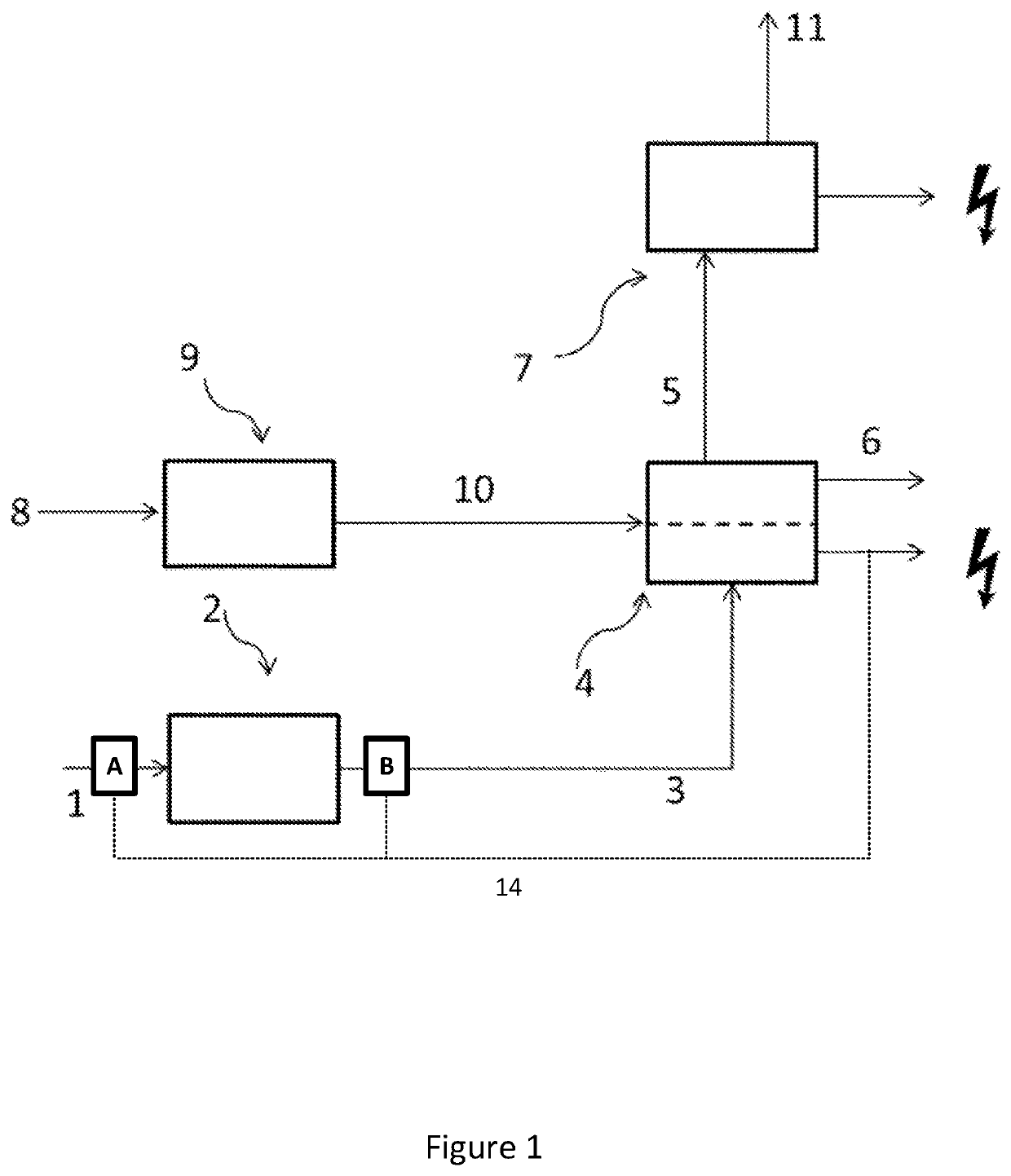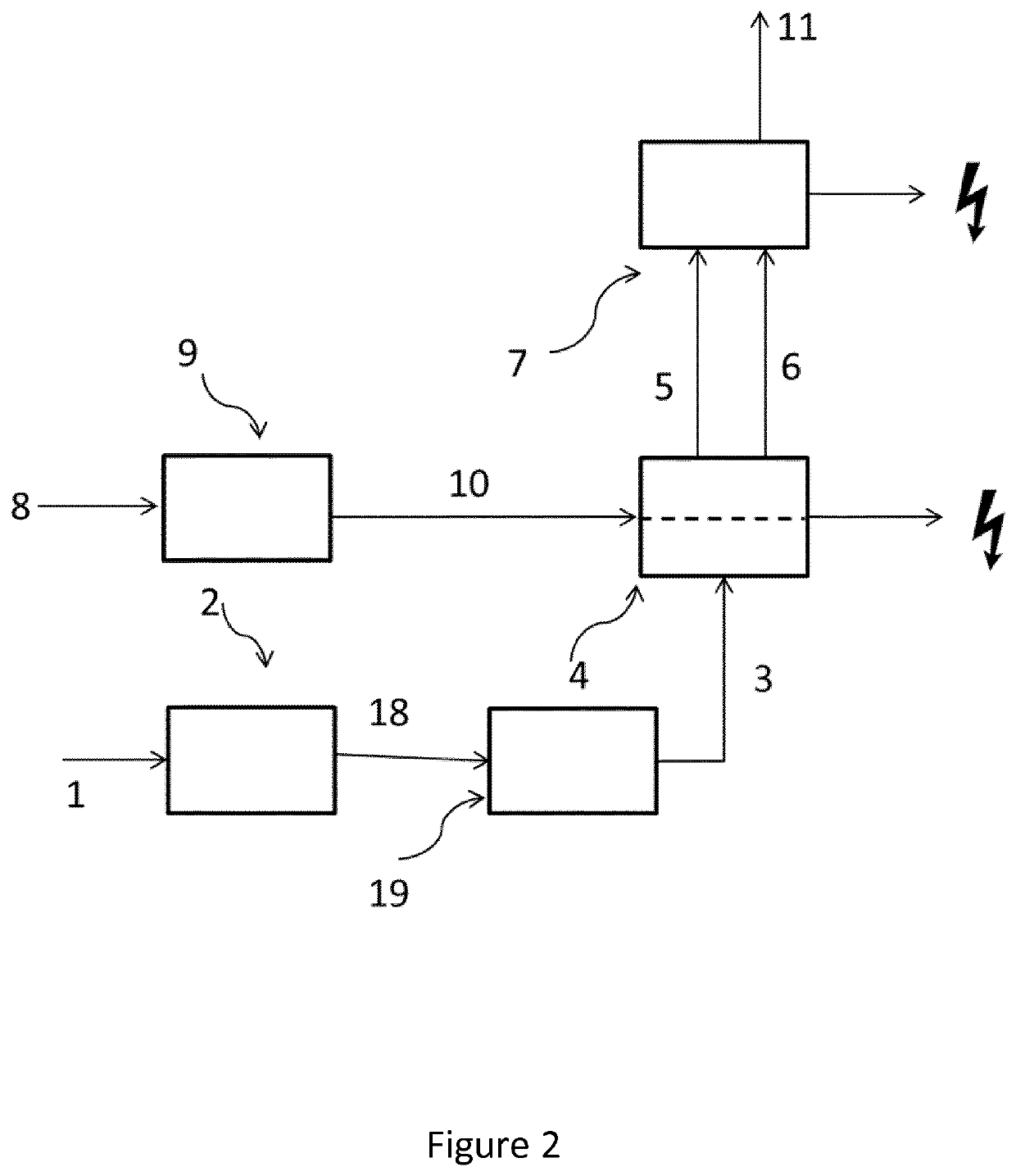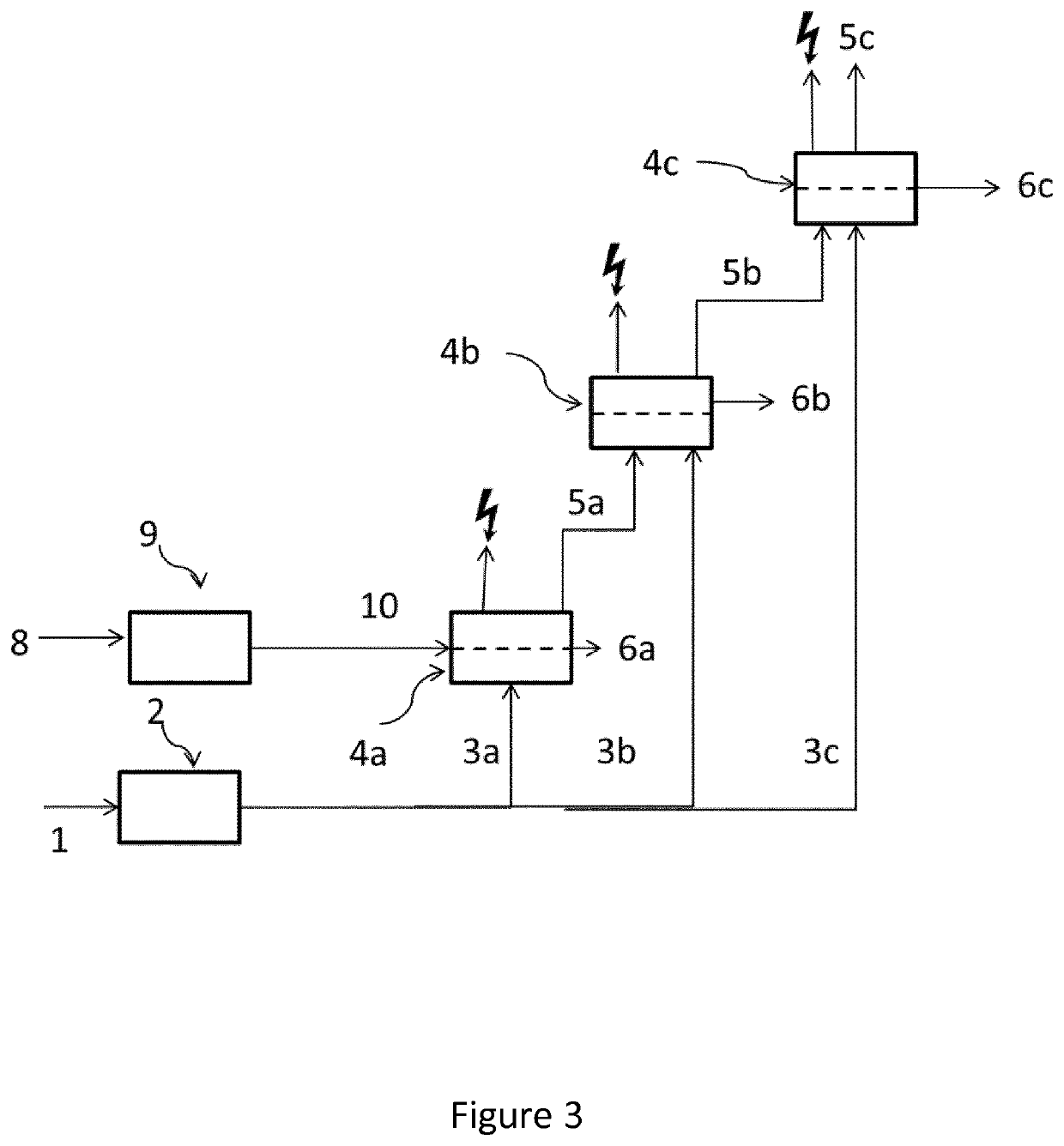Power generation process
a technology of power generation and process, applied in the direction of machines/engines, biological water/sewage treatment, biological sludge treatment, etc., can solve the problems of uneconomic process, increased pressure on the side of the membrane to which the solvent diffuses, and inability to achieve the power density of the general population
- Summary
- Abstract
- Description
- Claims
- Application Information
AI Technical Summary
Benefits of technology
Problems solved by technology
Method used
Image
Examples
Embodiment Construction
[0029]The process of the present invention may increase the efficiency of energy generation using wastewater streams. The process of the present invention uses wastewater as the lower salinity stream in an osmotic power generation process, prior to decomposing the organic matter present in the wastewater stream to produce biogas. This sequence of wastewater use helps to increase the efficiency of the biogas process.
[0030]Industrial and / or domestic wastewater, for example sewage provides a useful source of organic material for use in the biogas generation process. However, the relatively low amount of organic material present in most wastewater as compared to the liquid component means that energy production per unit volume of wastewater is relatively low.
[0031]As well as the increase in efficiency that may be expected by including additional power generation means (an osmotic power unit and / or thermal power unit) into a biogas process, the processes of the present invention compleme...
PUM
| Property | Measurement | Unit |
|---|---|---|
| temperature | aaaaa | aaaaa |
| temperature | aaaaa | aaaaa |
| temperature | aaaaa | aaaaa |
Abstract
Description
Claims
Application Information
 Login to View More
Login to View More - R&D
- Intellectual Property
- Life Sciences
- Materials
- Tech Scout
- Unparalleled Data Quality
- Higher Quality Content
- 60% Fewer Hallucinations
Browse by: Latest US Patents, China's latest patents, Technical Efficacy Thesaurus, Application Domain, Technology Topic, Popular Technical Reports.
© 2025 PatSnap. All rights reserved.Legal|Privacy policy|Modern Slavery Act Transparency Statement|Sitemap|About US| Contact US: help@patsnap.com



